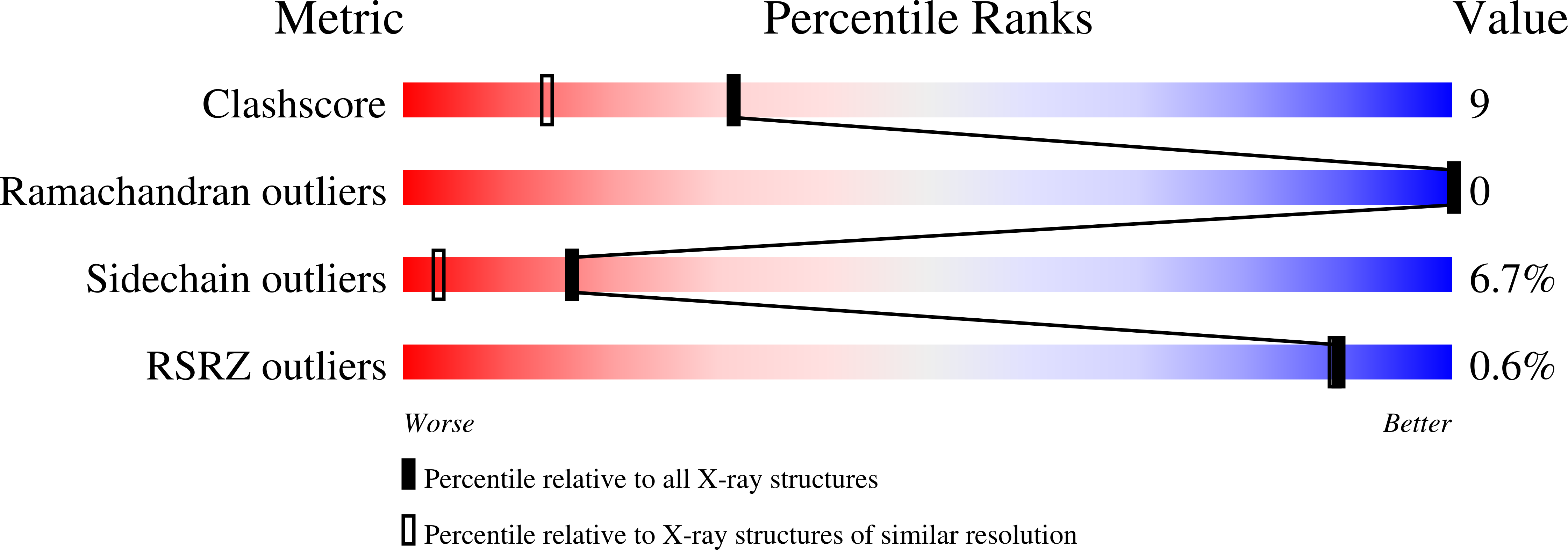Slow- and fast-binding inhibitors of thermolysin display different modes of binding: crystallographic analysis of extended phosphonamidate transition-state analogues.
Holden, H.M., Tronrud, D.E., Monzingo, A.F., Weaver, L.H., Matthews, B.W.(1987) Biochemistry 26: 8542-8553
- PubMed: 3442675
- DOI: https://doi.org/10.1021/bi00400a008
- Primary Citation of Related Structures:
4TMN, 5TMN - PubMed Abstract:
The modes of binding to thermolysin of two phosphonamidate peptide inhibitors, carbobenzoxy-GlyP-L-Leu-L-Leu (ZGPLL) and carbobenzoxy-L-PheP-L-Leu-L-Ala (ZFPLA), have been determined by X-ray crystallography and refined at high resolution to crystallographic R-values of 17.7% and 17.0%, respectively. (GlyP is used to indicate that the trigonal carbon of the peptide linkage is replaced by the tetrahedral phosphorus of a phosphonamidate group.). These inhibitors were designed to be structural analogues of the presumed catalytic transition state and are potent inhibitors of thermolysin (ZGPLL, Ki = 9.1 nM; ZFPLA, Ki = 0.068 nM) [Bartlett, P. A., & Marlowe, C. K. (1987) Biochemistry (following paper in this issue)]. ZFPLA binds to thermolysin in the manner expected for the transition state and, for the first time, provides direct support for the presumed mode of binding of extended substrates in the S2 subsite. The mode of binding of ZFPLA displays all the interactions that are presumed to stabilize the transition state and supports the postulated mechanism of catalysis [Hangauer, D. G., Monzingo, A. F., & Matthews, B. W. (1984) Biochemistry 23, 5730-5741]. The two oxygens of the phosphonamidate moiety are liganded to the zinc to give overall pentacoordination of the metal. For the second inhibitor the situation is different. Although both ZFPLA and ZGPLL have similar modes of binding in the S1' and S2' subsites, the configurations of the carbobenzoxy-Phe and carbobenzoxy-Gly moieties are different. For ZFPLA the carbonyl group of the carbobenzoxy group is hydrogen bonded directly to the enzyme, whereas in ZGPLL the carbonyl group is rotated 117 degrees, and there is a water molecule interposed between the inhibitor and the enzyme. For ZGPLL only one of the phosphonamidate oxygens is liganded to the zinc. Correlated with the change in inhibitor-zinc ligation from monodentate in ZGPLL to bidentate in ZFPLA there is an increase in the phosphorus-nitrogen bond length of about 0.25 A, strongly suggesting that the phosphonamide nitrogen in ZFPLA is cationic, analogous to the doubly protonated nitrogen of the transition state. The observation that the nitrogen of ZFPLA appears to donate two hydrogen bonds to the protein also indicates that it is cationic. The different configurations adopted by the respective inhibitors are correlated with large differences in their kinetics of binding [Bartlett, P. A., & Marlowe, C. K. (1987) Biochemistry (following paper in this issue)]. These differences in kinetics are not associated with any significant conformational change on the part of the enzyme.(ABSTRACT TRUNCATED AT 250 WORDS)
Organizational Affiliation:
Institute of Molecular Biology, University of Oregon, Eugene 97403.

















